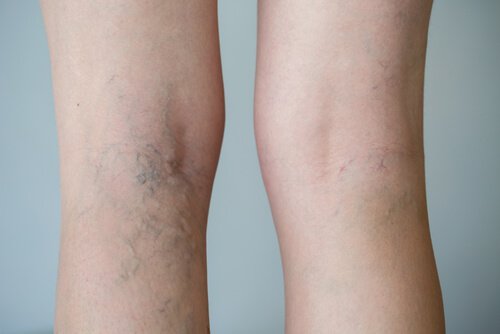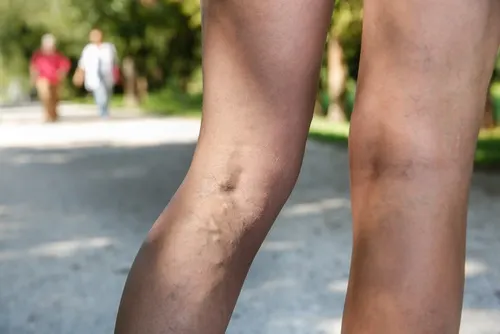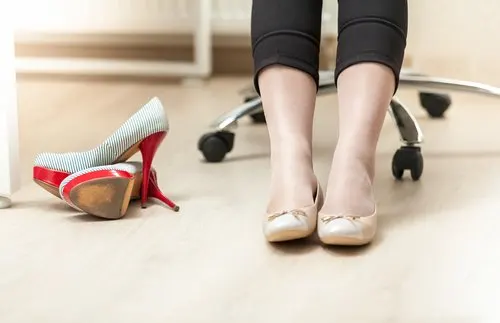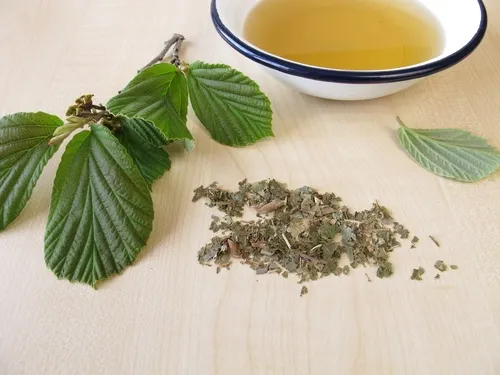Tips to Help Relieve Varicose Vein Pain

Varicose veins are very common in adult women, affecting about 50% of the female population. Unfortunately, this condition can cause pain and discomfort. If your varicose veins throb at night and make it hard to sleep, or you don’t like the way they look, then read this article on how to help relieve varicose vein symptoms and pain.
What are varicose veins and why do they hurt?

They’re dark blue or purple in color and protrude quite a bit from the leg in some cases. They can cause cramps, a heavy sensation in the legs, and even severe pain. Some women also experience itching and pain when they scratch their leg.
Varicose veins happen because of venous insufficiency and poor circulation. When blood flow back to the heart isn’t good, the fluid remains in certain areas. This can cause inflammation, edemas, and varicose veins.
One significant factor that leads to the development of varicose veins is genetics. If there are cases of varicose veins in your family, it’s likely that you will also suffer from them at some point in your life, especially if your mother or grandmother has this condition.
You might like:
Tips to relieve varicose vein pain and reduce symptoms
Now, we’re going to give you 6 tips to help you prevent varicose vein pain or relieve the symptoms when you feel cramps or heaviness in your legs:
1. Perform light exercise to relieve varicose vein pain
There’s no doubt about this: exercise is an excellent health ally.
If varicose veins run in your family, we recommend that you do a low-intensity exercise like yoga, swimming, or cycling.
Walking can also help. Don’t do activities that are too intense because sudden movements or jumps can aggravate the symptoms.
2. Wear comfortable shoes

While those heels might be cute and make your legs look gorgeous, they can also cause health problems if you have varicose veins.
If your shoes are too tight, your blood can’t move freely, which makes it difficult for it to return to the heart. This is also true for tight socks and pants, because they also put pressure on your legs.
We recommend that you wear comfortable shoes for most of the day, especially if you’re have to stand up for several hours.
If you have to wear heels for work, then you can carry them separately when you’re on your way there and put them on when you arrive.
3. Elevate your legs
Once you return home, take the opportunity to put your legs up. This may hurt a little or be a bit uncomfortable at first. You may also feel your calves falling asleep. All of this is normal: your blood is trying to go down.
If you’re sitting on the sofa, put your feet in front of you on a bench or table. If you’re lying down, you can support your heels by putting them on the wall. And when you’re in bed, you can put some cushions or pillows under your legs.
All of these options are good for getting the blood to flow back to your heart.
4. Change positions
Many jobs involve sitting or standing for many hours at a time. Both positions are bad for the health of your legs and are also a potential cause of varicose veins.
So, you should change your posture as many times as possible during the day.
For example, if you’re at your desk, you can get up to talk on the phone when you’re at the office or, if you work in a store, take advantage of the less busy hours to sit down for a little while.
5. Get massages
You don’t need to go to a masseuse for this. You can do your own massages at home! But be very careful not to exert too much pressure!
The massage is simple: gently knead the affected area and the protruding veins. Repeat this every day for about 15 minutes each time.
To get even better results, you can use essential oils like thyme, rosemary, or lavender. They all have properties that stimulate circulation. It is important to remember that any oil mixture must be made with a base oil for its best use.
6. Maintain a balanced diet

You should also avoid drinking too much alcohol or coffee and make sure to drink 2 liters of water per day.
Your diet should consist of a good amount of fiber, antioxidants, and potassium. Eating raw fruits and vegetables is a great way to try to reduce the heaviness in your legs and improve their appearance.
Read more:
Home remedies to relieve varicose vein symptoms and pain
Along with changing your daily habits, there are some plants, fruits, and oils you can use to help relieve varicose vein symptoms and pain:
Marigold
Marigold (Calendula) improves the tone of your veins and makes them less vulnerable to degeneration. It also has anti-inflammatory properties, reduces swelling and repairs damaged tissue.
Massage your legs with marigold cream before going to sleep to help relieve varicose vein pain if it’s bothering you.
Witch hazel

Witch hazel is an astringent that can help your circulatory system. It can reduce and relieves the heaviness caused by varicose veins. It’s easy to find a witch hazel essential oil at most health stores.
You should apply it with gentle massages every night.
Blueberries
This is a perfect fruit for any circulatory problem. It has amazing vasodilatory properties and can strengthen your vein walls. Blueberries also provide the body with important vitamins and bioflavonoids.
Don’t hesitate to eat a handful a day in the morning, or as a dessert.
Cypress
Cypress is good for just about every condition involving the circulatory system and vein inflammation.
You can use cypress leaves to make a tea, which you can drink or apply with a cotton swab on the affected areas of your legs.
All cited sources were thoroughly reviewed by our team to ensure their quality, reliability, currency, and validity. The bibliography of this article was considered reliable and of academic or scientific accuracy.
- NIH. Biblioteca Nacional de Medicina de los EE UU. Varices. Página actualizada 8 agosto 2018
- National Heart, Lung and Blood Institute . Varices.
- Comunidad de Madrid. Guía de recomendaciones al paciente. Cuidados en las varices. (2006).
http://www.comunidad.madrid/sites/default/files/doc/sanidad/chas/cuidados_en_las_varices.pdf
This text is provided for informational purposes only and does not replace consultation with a professional. If in doubt, consult your specialist.








